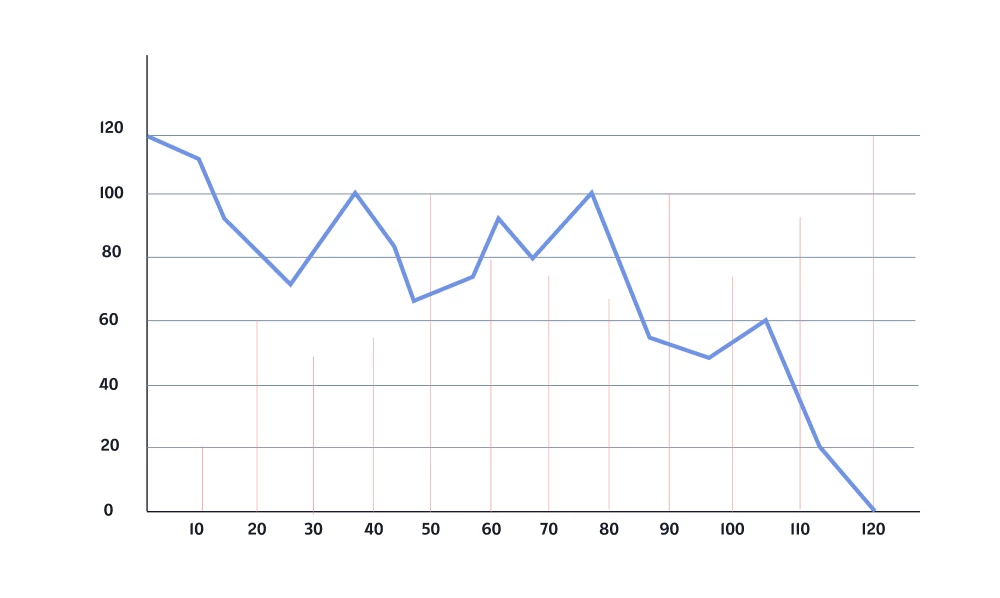A company-wide project takes months to function optimally and costs as high as 3% to 4% of a hospital’s operating budget. Still, these operations do fail after a certain period. There are several instances where a failed EHR implementation costs a hospital around $50 million.
Companies in healthcare industries responsible for carrying out huge-scale technology implementation are often reminded of the instances of massive failures.
The percentage of EHR failures is drastically higher than the success rate. What exactly is a loss when it comes to EHR implementation, it is critical to understand that the term “failure” encompasses a wide range of situations.
It’s easy to dismiss EHR implementation failures as those rare and extreme cases in which the EHR, after being implemented, is unable to be used without significant disruption to a practice’s operations or results in a significant financial impact on an organization.
Failure of an EHR can be defined as its inability to perform its required function or, more subjectively, as a failure to meet expectations. Failure is defined subjectively and depends on the expectations attached to a project.
In this guide, we’ll talk about the reasons why an EHR system fails. Also, we’ll devise a solution to avoid such mistakes that can lead to terrible disasters.
What exactly are you expecting from the EHR server? Is your goal to get a significant amount of increase in revenue, improve the quality of care for patients, or digitize paper records into online databases?
EHR usability was investigated in a recent study published in Mayo Clinic Proceedings. In a large-scale survey of US physicians, one-quarter rated their EHR’s usability on the System Usability Scale, a standard technology usability measure (SUS).
The scale assigns usability a letter grade, with highly usable systems receiving an A and unusable systems receiving an F.
According to the study, users in other studies gave Google’s search engine an “A” for usability. EHRs were among the least usable, receiving an F. Poor product usability is one of the major reasons for its failure.
Note: If you still can not decide on the major role of implementing an EHR system, then the best decision you could make is to find a purpose and implement the software. It will help out the companies to sort out any shortfalls.
One can not expect everyone to be technologically advanced. There are a lot of stakeholders involved in the process. An application should never be an IT decision. A perfect implementation demands technical support 24/7 to answer numerous silly inquiries.
They can be related to any domain, especially management, scheduling, clinical concerns, encounters, etc.
The same research from Mayo Clinic Proceedings (mentioned above) can help prove this hypothesis.
Note: As a result, it must support technical and personnel elements. It must provide support for both technical and personnel components. This helps to avoid situations such as when, shortly after the EHR was implemented at one of the 500+ bed hospitals, the 1100+ staff physicians refused to use the system due to its lack of usability!
There is an added responsibility on the leadership and management team to set high standards for themselves and provide team members with tools to help them succeed.
Professional satisfaction is important, but if clinical staff believe an EHR impedes their ability to do their job, an organization may need to reconsider whether its EHR implementation went as planned. According to the Stanford survey, 49 percent of clinicians reported that their EHR reduced clinical effectiveness.
Note: Monitor, motivation, and management, these all three aspects are essential to make any project work. When implementing a huge clinical management tool across a company, we must consistently monitor its productivity and efficiency.
Infrastructure is another important parameter that significantly affects the implementation across the cluster.
Most healthcare organizations do not have the technical capabilities or infrastructure to support the security of the EMR and neglect to take care of issues like reliable wireless coverage, networking over adequate bandwidth, regular data backups, patient data security, or scalable data centers.
These problems can significantly lower clinicians’ and doctors’ productivity and impair patient care.
Many techniques fail to anticipate potential implementation and post-implementation costs, which leads to implementation failure in many cases. According to the implementation data that is accessible, a substantial majority of practices revealed that financial issues afflicted their implementation.
MPI Group and Medical Economics surveyed that 65% of respondents who recently upgraded their EHR software claim that doing so cost their practice money. The losses were deemed significant by about 43% of internists and other specialists/subspecialists working outside primary care.
Note: Any of these infrastructure-related problems can significantly reduce clinicians’ and doctors’ productivity and have a detrimental impact on patient care. Make sure you and your provider are aligned on the same page.
Clinicians should be able to operate more quickly and effectively using EMRs than without them, but this is only possible if the EMR embraces their particular workflows. Before implementing the EMR, a mandatory step called workflow analysis must be completed.
In the Stanford study, 49% of the polled practitioners said EHR decreased their clinical effectiveness.
Note: Providers need to ensure whether all these functionalities are improving their lives or deteriorating.
EMR installations, like the implementation of any other significant ERP system, must take into account the “human aspect,” which, if disregarded, may be the primary reason for project failure.
There may be some tech-savvy doctors, others who are social media savvy, and others who are not very tech-savvy. In these situations, there may be technology resistance in withdrawal or refusal.
Hospitals must spend money on appropriate training far in advance, even before the system goes live, to avoid a high learning curve.
Also, The goal of EMR technology should be to eliminate the need for any additional forms of communication in favor of making interdepartmental communication as simple and seamless as possible.
According to American EHR Partners and the American Medical Association, more than half of survey participants said their EHR had a negative effect on their practice’s costs, productivity, and efficiency.
Note: Always after implementing software, it’s mandatory to take feedback. You need to ensure that your software is a perfect fit for the industry or not. Also, there should not be any complications in getting an amendment. They’re always productive and aim for smoother functionalities, so ensure seamless software beforehand.
To avoid such fatal mistakes and failures, it’s mandatory to work on these reasons and develop a solution that perfectly understands your requirements.
No need to look anywhere else, as KiviCare addresses all the essentials that a doctor requires to set up a virtual clinic.
Add and record interactions with your patients. Inquire about the status of clinic session changes. You can also send emails with dashboard links in them.
Is it all for Free? Yes, but only the basics at first.
You can upgrade your plan anytime and get additional services for better functionality.











